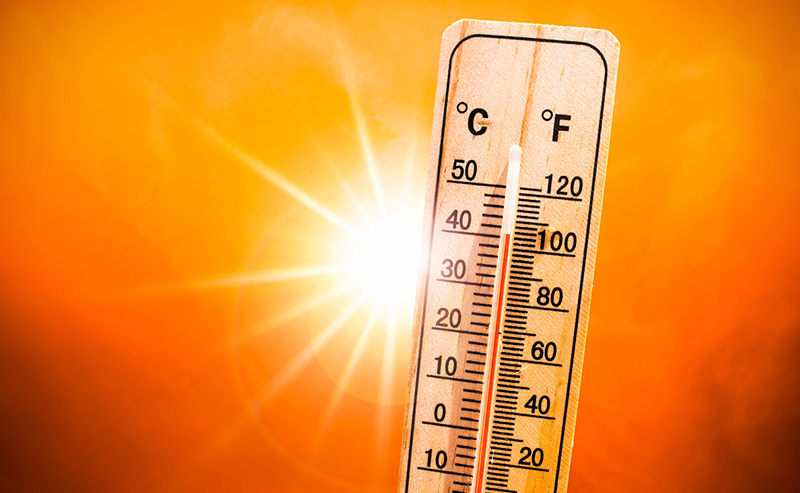Excessive heat. If your organization is located in an area sometimes plagued by this natural hazard, you know the tremendous toll it can take people, animals, air quality, land, etc. Just ask those out west, where there’s a record-breaking heatwave right now. Daytime temperatures in parts of California, Nevada, Utah, and Arizona, are expected to hover well over 100-110 degrees for much of this week (and perhaps even higher and longer).
As expected, state and local emergency management agencies are concerned about the hazard and the risks associated with it, as are area residents, businesses, and schools, among others.
Heat, in itself, poses a number of risks to personal health, particularly for the elderly and those with certain medical conditions, e.g., heart and respiratory diseases. Individuals working or playing outdoors may experience heat strokes, heat exhaustion, or even death. In fact, and according to the Centers for Disease Control and Prevention (CDC), more than 600 people in the U.S. are killed by extreme heat every year. Further, many cities across the U.S., including St. Louis, Philadelphia, Chicago, and Cincinnati, have seen large increases in death rates during heat waves.
Aside from health risks, excessive heat can exacerbate drought conditions, adversely affecting agriculture and local water supplies. As a result, water shortages may arise, prompting rations. Additionally, pollutants may accumulate within groundwater, leading to contamination and the need to boil water prior to consumption.
Further, extreme temperatures, coupled with little to no rain, can also dramatically increase the risk of wildfire. This is especially true in areas like Northern California, where the devastating Camp Fire ignited in Butte County on November 8, 2018. By the time it was fully contained (17 days later), the fire had claimed 85 lives, destroyed nearly 19,000 homes, businesses, and other structures, and scorched over 240 square miles of Northern California forest.
Add to these concerns the demand that excessive heat puts on electrical power supply infrastructure, or grid, as people run their air conditioners both colder and longer in efforts to stay cool. It is not uncommon for the extra load to cause power transformers to blow up, causing a power failure. Such explosions can also trigger wildfires, as public utility PG&E tried to avoid last year through widespread planned outages. Unfortunately, the decision was met with harsh criticism from the public.
For these reasons and others, excessive heat is considered very problematic when it comes to emergency preparedness. And, rightly so since the hazard brings with it so many uncertainties. As with all natural (and human-caused) hazards, it is imperative for public and private sector organizations to have a comprehensive and current emergency/continuity plan. And, of course, to carefully monitor potentially dangerous situations and take appropriate action if and when it becomes necessary.
As of this writing, California Governor Gavin Newsom has declared a state of emergency and issued new orders for wildfires amid the extreme (and ongoing) heatwave.
Having developed over 10,000 emergency preparedness and hazard mitigation plans for public and private sector organizations across 39 states, BOLDplanning offers first-class consultative services coupled with an industry-leading online planning platform. Call 615.469.5558 or email info@BOLDplanning.com to learn more.






